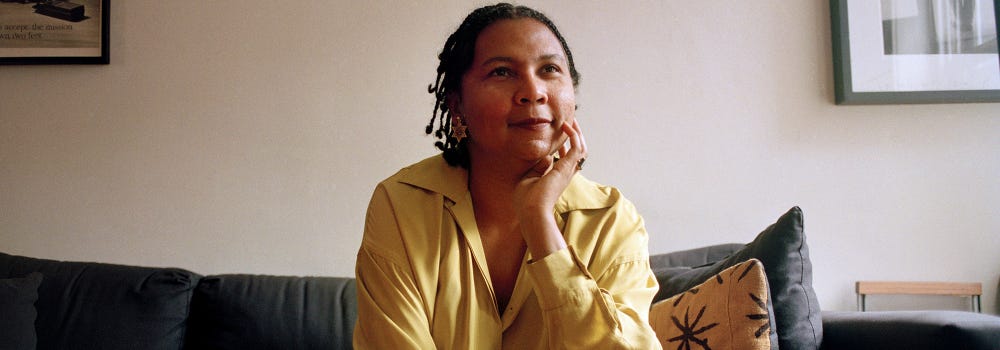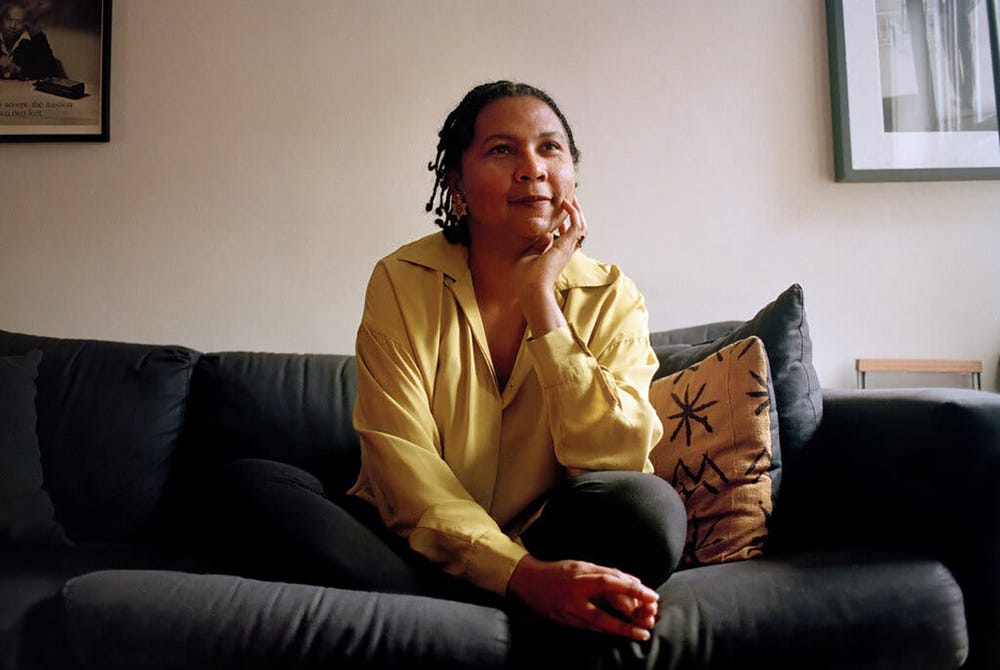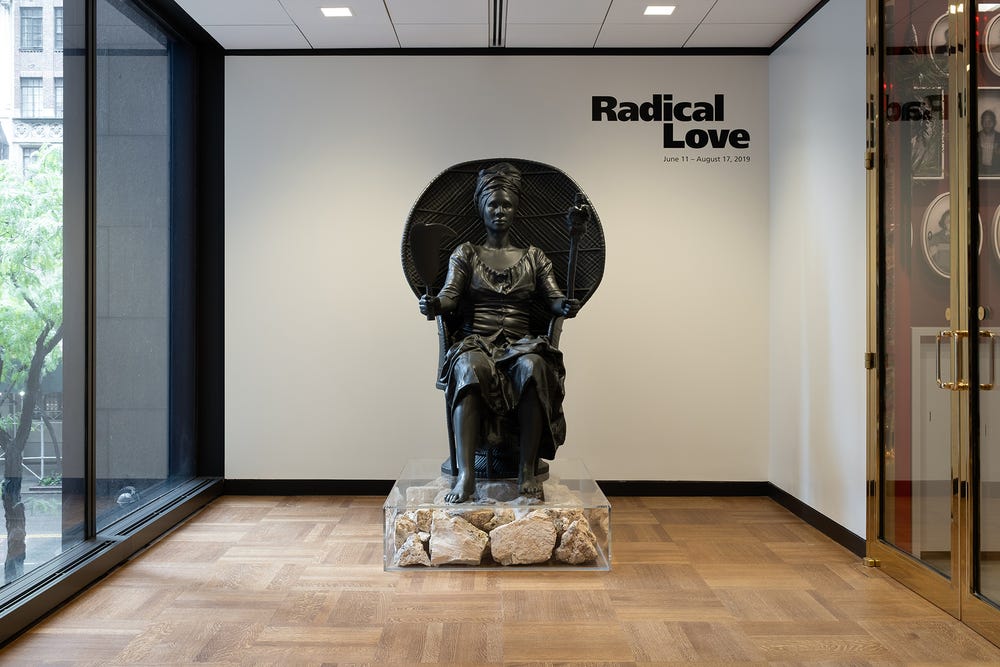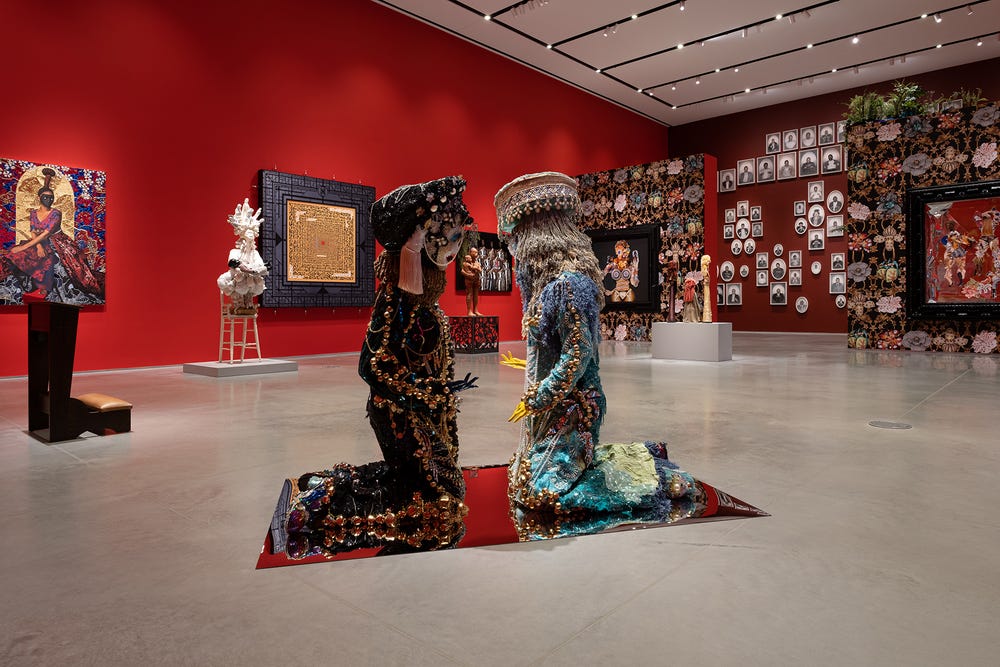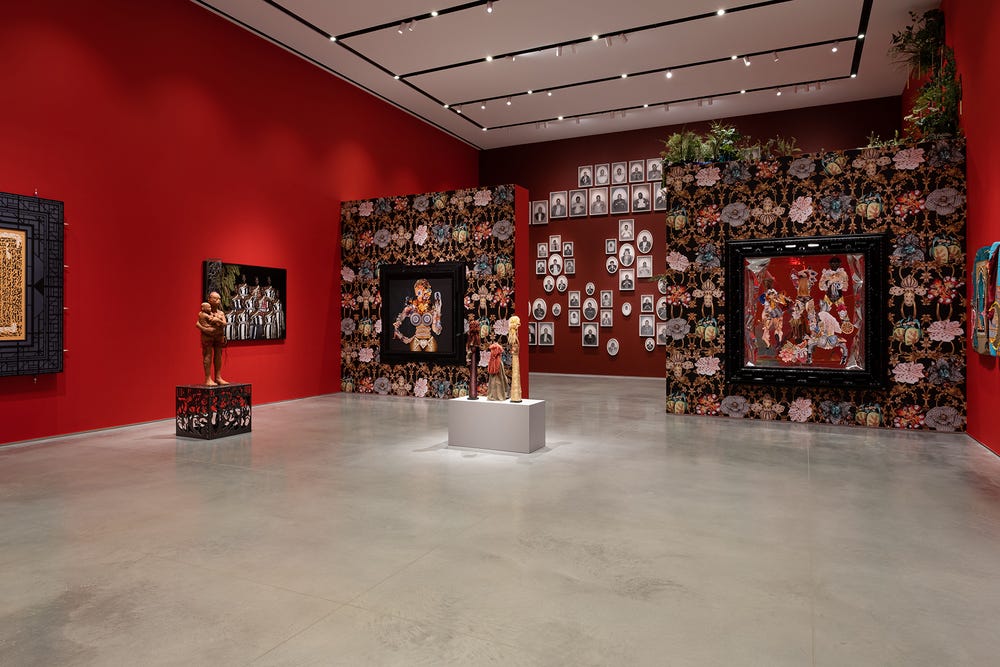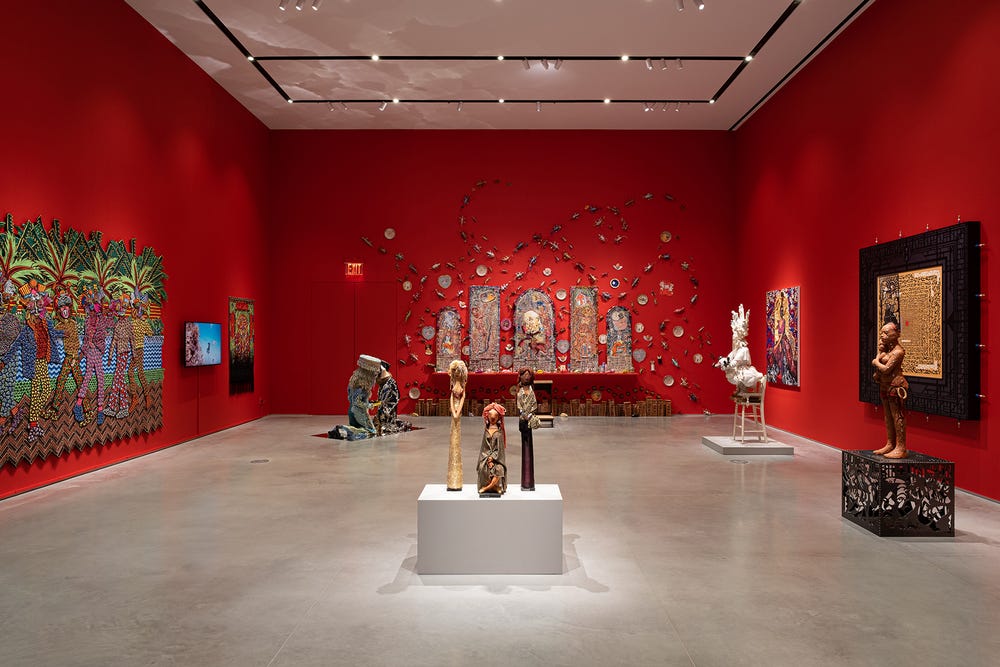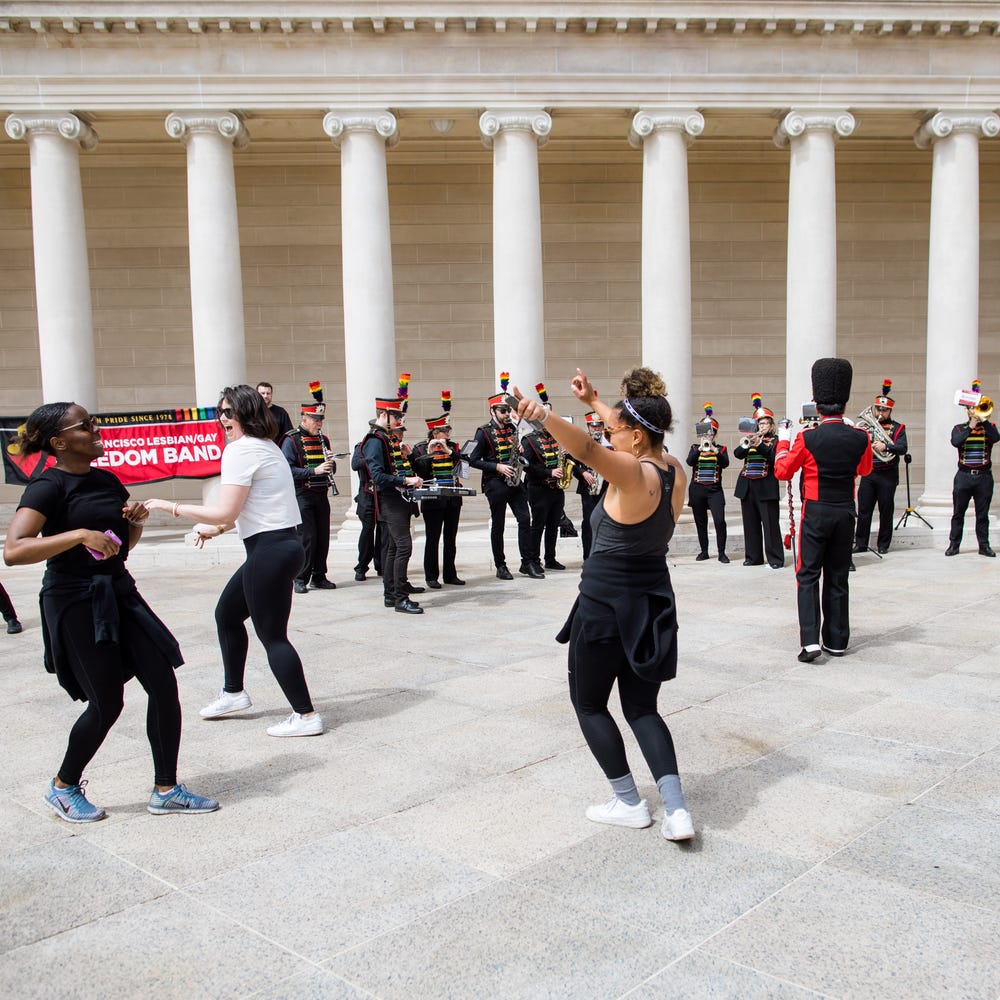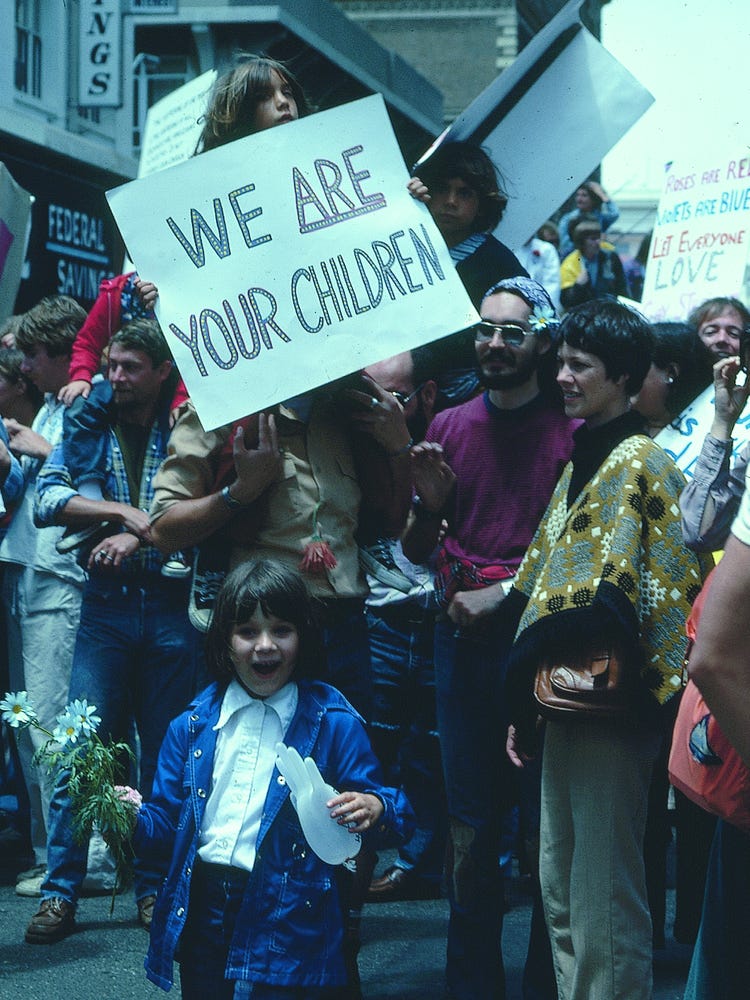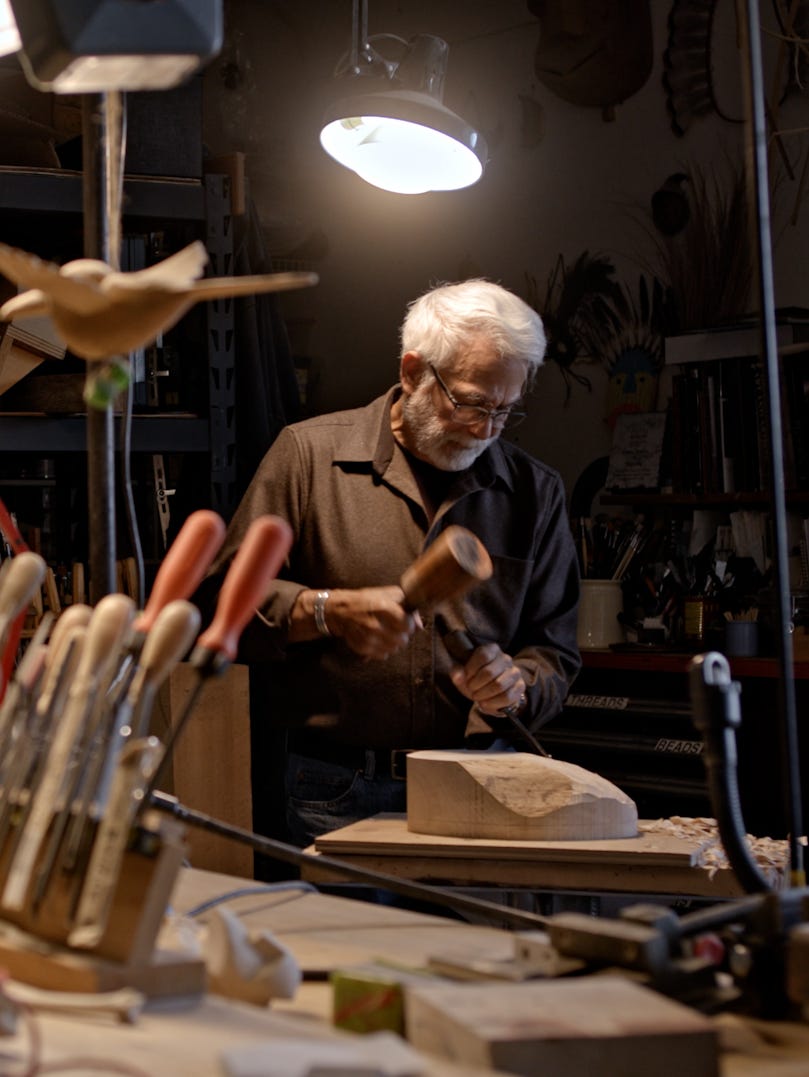Revolutionary Love: Remembering bell hooks
By Natasha Becker
March 8, 2022
After four decades of trailblazing feminist scholarship, author and activist bell hooks died on December 15, 2021, at age 69. Born Gloria Jean Watkins in Hopkinsville, Kentucky, in 1952, she later honored the women in her family by taking her maternal great-grandmother’s name as her pen name, setting it in lowercase to emphasize “the substance of books, not who I am.”
I first encountered bell hooks as an undergraduate student in Cape Town, South Africa, and I was instantly in awe. She wrote about challenging topics with confidence and ease — and from a black woman’s perspective. Her ideas resonated with me, even though she was from a different part of the world and of a different generation.
I was born and raised in a country that enforced centuries of racism and inequality. I was 20 years old when black people were finally allowed to vote in the first truly democratic elections in 1994, overwhelmingly electing Nelson Mandela as their president. But I mostly grew up within the South African paradox: a country of incredible diversity, stunning natural beauty, and rich cultures divided by racial injustices and inequalities. My quest to understand this paradox was inseparable from my desire to understand myself.
I was drawn to bell hooks because she went deep into analyzing the American paradox and her position within it. She was radical not only for her views on race, gender, and inequality but also for proposing love as an act of resistance and for saying that black women were not just their work (or labor) but deserved, as much as anyone, their own affection and tenderness.
bell hooks in 1995. Photograph by Monica Almeida/The New York Times/Redux
In the first collection of her essays I read, Black Looks: Race and Representation, she argued for alternative ways to look at blackness and whiteness. Each essay in the book analyzed the ways blackness and black people are viewed and experienced in mainstream culture, especially popular culture. As she described it, “The essays in Black Looks are meant to challenge and unsettle, to disrupt and subvert.” This is exactly what I experienced!
For instance, like everyone else in the 1990s, I was a big fan of Tina Turner and Madonna without thinking much about how either of them might represent womanhood or stereotypes about women or what impact their images might have on me. But hooks argued that black women in film and music are often seen only as objects, not as people, causing problems in white-black relationships, especially in how black women view themselves: they either oppose the sexist pop-culture image or quietly absorb the stereotypes. She cited Tina Turner as an example of a black woman who must be represented as sexually free-spirited and driven by lust in order to be successful in entertainment and demonstrated how this representation creates paths of abuse and violence against black women. She compared Madonna’s self-representation as a “mother figure” to people of color (“Madonna” denotes the Virgin Mary, after all) to the way white colonialists saw themselves as saviors and parental figures to supposedly inferior races. Worse still, she argued, Madonna appropriates black culture for popular entertainment. Her analysis was unsettling but convincing. I understood the point: such images of black and white women strongly influence people’s perception and treatment of people of color.
However, it was her thoughts on “revolutionary love” that left the most profound and long-lasting impression. She took seriously the idea that social change had to center love and that this was as much about transforming ourselves as it was about changing the world. In her 1999 book All About Love: New Visions, she focused on the importance of love, community, and self-care, not as escapism or distraction but as an essential part of changing the world. She argued that we cannot continue to hurt, undermine, and belittle each other and simultaneously build a better society. “Whenever domination is present love is lacking,” she wrote in her 2000 book Feminism Is for Everybody: Passionate Politics.
bell hooks had a big vision for humanity. She believed that we are all connected but also that we cannot ignore our inequalities and privileges. “The soul of our politics,” she said, “is the commitment to ending domination.” She insisted that all of our relationships must be built on a foundation of mutual respect. She diagnosed that our societies are lacking in love and the only way to heal this situation is with forgiveness, compassion, and community. She expressed this intention and vision in her book Sisters of the Yam: Black Women and Self-Recovery. “This is a book about reconciliation,” she wrote. “It is meant to serve as a map, charting a journey that can lead us back to that place dark and deep within us, where we were first known and loved, where the arms that held us hold us still.” As a young black woman living through a tumultuous time in South Africa, I soaked up her wisdom and perspective.
Installation view of the exhibition Radical Love at the Ford Foundation Center for Social Justice Art Gallery. Photograph by Sebastian Bach
Decades later I had an amazing opportunity to center hook’s ideas, activism, and feminism in my work as a curator. In 2019 I was invited to co-curate an exhibition at the new Ford Foundation Center for Social Justice and Gallery in New York. We conceived an exhibition titled Radical Love that was underpinned by a belief in the dignity of all people, highlighting artists who are working to advance humanity. The exhibition was guided by hooks’s powerful words: “Were we all seeing more images of loving human interaction, it would undoubtedly have a positive impact on our lives.” We chose to center love in the exhibition and defined it as a commitment to the interconnectedness of people and the planet.
Our exhibition statement proclaimed:
“Radical Love offers a joyous vision of love’s transformative power and calls for a return to love. While we may know about love, many of us have forgotten what love is or why we need love to sustain life. This exhibition is inspired by love as a transformative force and begins by thinking of love as an action rather than a feeling; love assumes responsibility and accountability. What is urgent about the politics of love in our present moment is that we are claiming a space within culture, with no sense of fear or apology, for society’s others.”
Installation view of Radical Love at the Ford Foundation Center for Social Justice Art Gallery. Photograph by Sebastian Bach
We selected 23 artists from around the world whose artwork is grounded in ideas of love, kindness, and compassion as a force for social change and who celebrate those on the margins of society. Because their artworks explored ideas of devotion, abundance, and beauty, we transformed the environment of the gallery from a typical white space to a bright red one. The enveloping red walls of the gallery allowed us to literally and metaphorically recalibrate the space, and create a positively exhilarating center for the importance of love in creating community and connection. Because we considered the exhibition through human connection and social justice, it was important to frame the gallery as a space of community, celebration, and devotion.
Installation view of Radical Love at the Ford Foundation Center for Social Justice Art Gallery. Photograph by Sebastian Bach
In my curatorial essay “An Ode to Love,” I elaborated on the multifaceted nature of love — as compassion, as social justice, as inclusion, as celebration, as connection — through the different artistic strategies of artists in the exhibition. The artists in Radical Love proposed that to heal our wounded communities, we must return to an all-encompassing practice of love. My essay concludes that we all yearn to end cruelty, to live in a culture where kindness can flourish, and to create a world where everyone knows compassion. As such, love and compassion is our hope and our salvation.
Installation view of Radical Love at the Ford Foundation Center for Social Justice Art Gallery. Photograph by Sebastian Bach
As a curator I am positioned between being an exhibition maker, collection manager, educator, and creative practitioner. However, the etymology of the word curator is cura in Latin, and it means “to help or to care.” While there are distinct differences between curators, we are all to some degree engaged in a practice of “care.” How we express this depends on the context. For instance, it can be expressed as caring for artworks, caring for artists, caring for audiences, or all of the above. One of the truest ways I express myself as a curator is to find meaning and purpose in curating as a practice of care — even when I am creating friction or pushing new ideas. I learned this from bell hooks.
“To give ourselves love, to love Blackness,” said hooks, “is to restore the true meaning of freedom, hope, and possibility in all our lives.” Her legacy lives on in the minds and hearts of everyone she awakened and inspired.
Text by Natasha Becker, curator of African art.
